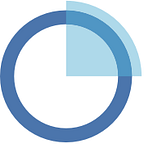Open banking in Poland
Being able to view a bank balance, transaction history or transfer money from three different bank accounts in one application? All this is possible thanks to the PSD2 directive, which led to the open banking in Poland and other EU countries.
What is open banking?
Open banking is a term used to describe all services and technologies in the area of finance. It is a complete revolution and a new quality of payment services. Pursuant to the EU directive (the Revised Payment Services Directive, known under the acronym PSD2), banks are obliged to provide other entities (banks, fintechs or payment services) with access to their clients’ accounts. It is usually done by open banking APIs.
The implementation of open banking was possible thanks to the adaptation of the appropriate technology, which operates on the basis of open architecture of programming interfaces, legal regulations (data sharing regulations) and business regulations (new business models).
Open banking API management isn’t easy
Banks have to provide APIs with data and documentation, which are often called sandboxes. As you can easily guess, this raises a lot of problems for the financial organizations themselves — how to securely share open APIs, monitor them and scale? It seems that this process cannot go smoothly without professional API management tools.
We wrote about one of the best APIM solutions for safe, fully scalable management in a separate article where you will find case studies of using Axway Amplify from such financial giants as Baird bank, BNP Paribas Personal Finance and Erste Group. If you have any questions about this tool — contact us — we are Axway’s official partner for Poland.
Third Party Provider: a few words about how banks can evolve
Authorized suppliers that have access to above-mentioned financial data of bank’s customers are known as Third Party Providers (TPPs). In Poland, according to the PSD2 directive, all banks are obligated to provide them:
- habits that are related to expenses;
- information about regular payments;
- favorite companies and suppliers.
At the moment, TPPs in Poland are the following institutions: Santander Bank, ING Bank Śląski, Bank Millennium, PKO Bank Polski, mBank and Alior Bank. Other types of institutions, including fintech companies, can also become Third Party Providers if they have obtained approval from financial regulators.
If a company obtains the status of a Third Party Provider (TPP), it is able to offer its clients two types of services:
- Payment Initiation Service (PIS) is a service for initiating payment transactions (XS2A type of service), which are based on account access. Thanks to this access, companies can make payments on behalf of the client (transfer of customer’s funds from an account held by another financial institution).
- Account Information Service (AIS) access to account information — it allows customers to view information on the account balance or transaction history outside the client’s bank service (account aggregation). This service helps the users to manage their home budgets in a better manner. AIS also supports documenting creditworthiness (credit process).
The full list of Polish banks that made the API available can be found on the Polish API website, i.e. the standard developed by the Polish Bank Association.
Advantages of open banking
Open banking allows access to personal, company and savings accounts, all credit and prepaid cards from completely different banks in one place — just one favorite application. Such a solution, even if it only allows you to view bills — can be useful on a daily basis, for example while shopping; just look at the application to find out which card is the best to pay for goods.
Such bank account data aggregation can also be used for the verification of the user’s creditworthiness. Thanks to the access to accounts from various banks, applying for a loan, debit or credit card is really simplified and takes less time.
Does open banking have any disadvantages?
Unfortunately, open banking also has drawbacks. It’s no secret that the financial sector is one of the sectors most often attacked by hackers. The introduction of open banking in Poland has increased the interest of criminals, who are more likely to plan cyberattacks in order to steal valuable customer data, install malware or extort money through the use of ransomware.
Why is the implementation of the PSD2 directive via API a good idea?
Banks decide to open account data and enable the flow of information between the bank and the network of partners via the API, although the PSD2 directive doesn’t require it. The API is an obvious choice in this situation, and more importantly, a very effective one that is readily used by programmers. In addition, the implementation of the directive guidelines using the API is much faster and in the long run more profitable than other solutions.
The use of API by banks is also not a difficult task for them, because the Application Programming Interface has been used by the financial sector for a long time — for example as a link between web banking and mobile applications. Banks also download such data from external APIs — maps, payment processing systems, transaction data, currency converters, information about the location of ATMs, working hours of branches, etc. Moreover, they are familiar with API management systems, such as the API Management Platform Axway Amplify that Transparent Data offers.
